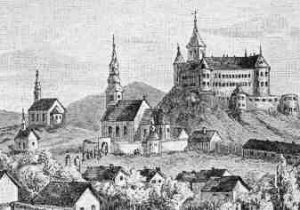History of Smolenice Castle
The first written documents about the existence of Smolenice date back to the 13th century, although its origin is as ancient as the Neo-Feudalism. Several aristocratic families lived there as the landlords – for instance, in 1388 the King Sigmund issued a Deed of Donation to give Smolenice to the Chieftain Ctibor of Ctiborice. In 1438, Count George of Pezinok and St. Jur became the new landlord of it.

The importance of Smolenice increased considerably in the 15th century as a castle was built there and became the centre and the seat of the Smolenice estate. Early in the 16th century, Smolenice was gained by the Orszaghs family. In 1777, Ján Pálffy takes the Smolenice estate as a pawn. The Pálffys family did not live at the castle which decayed considerably during the life of Krištof III, the last of the Erdödys family – they lacked money for any maintenance. The decay was completed during the Napoleon Wars – the main castle building and the tower burnt down.
Reconstruction of the Smolenice Castle of today was started early in the 20th century by Jozef Pálffy Jr., the landlord of Smolenice and Dobrá Voda estates. First works of the fortification walls started in 1887. Bastions from the old castle were preserved including a height extension and a new roofing. The Count Pálffy rebuilt the castle at his own expense according to the design by the architect Jozef Hubert. During World War I, the reconstruction was interrupted; provisional adaptation of some rooms was made and the archives of the Pálffy family were located in them. The construction was not resumed before the end of World War II. In 1945 the castle became the property of the State; it was taken over by the Slovak National Council which decided to keep it as their summer-house. The castle was finished and furnished and handed over to the Slovak Academy of Sciences on 26th June 1953 to become a representative place for meetings of the scientists from the worldwide.
